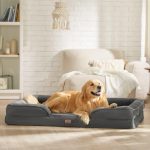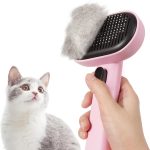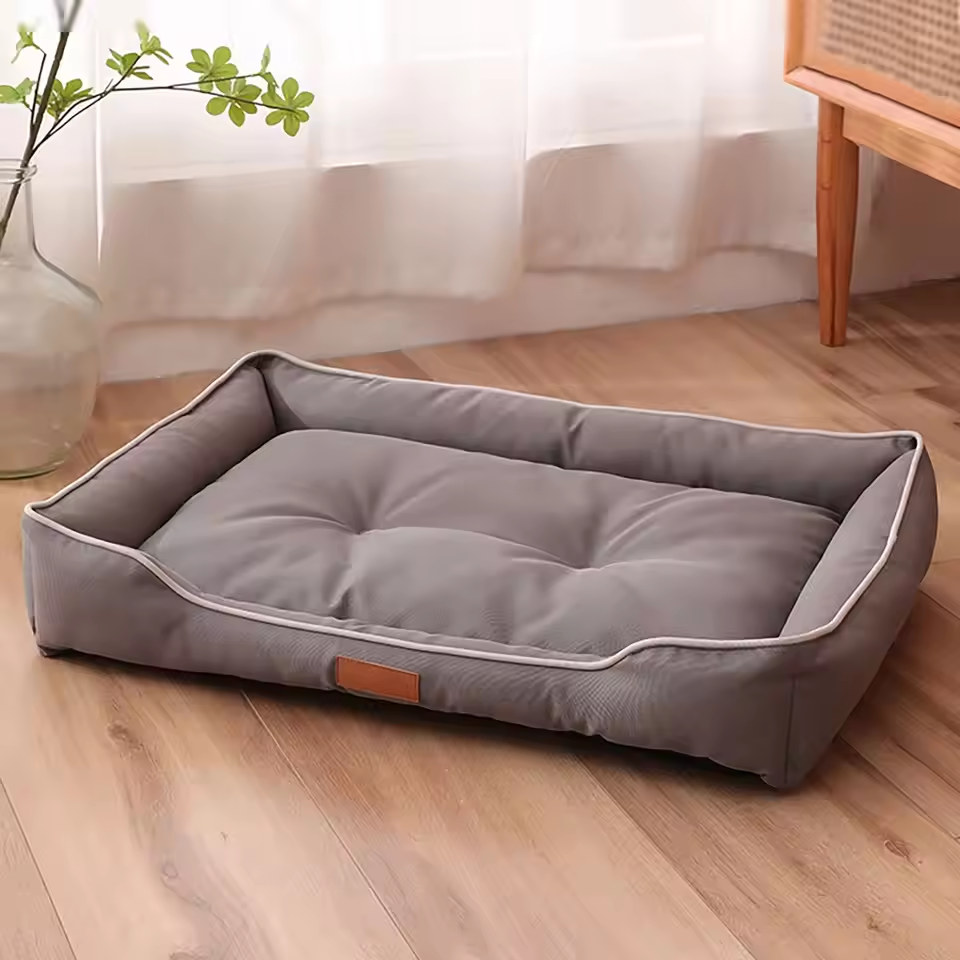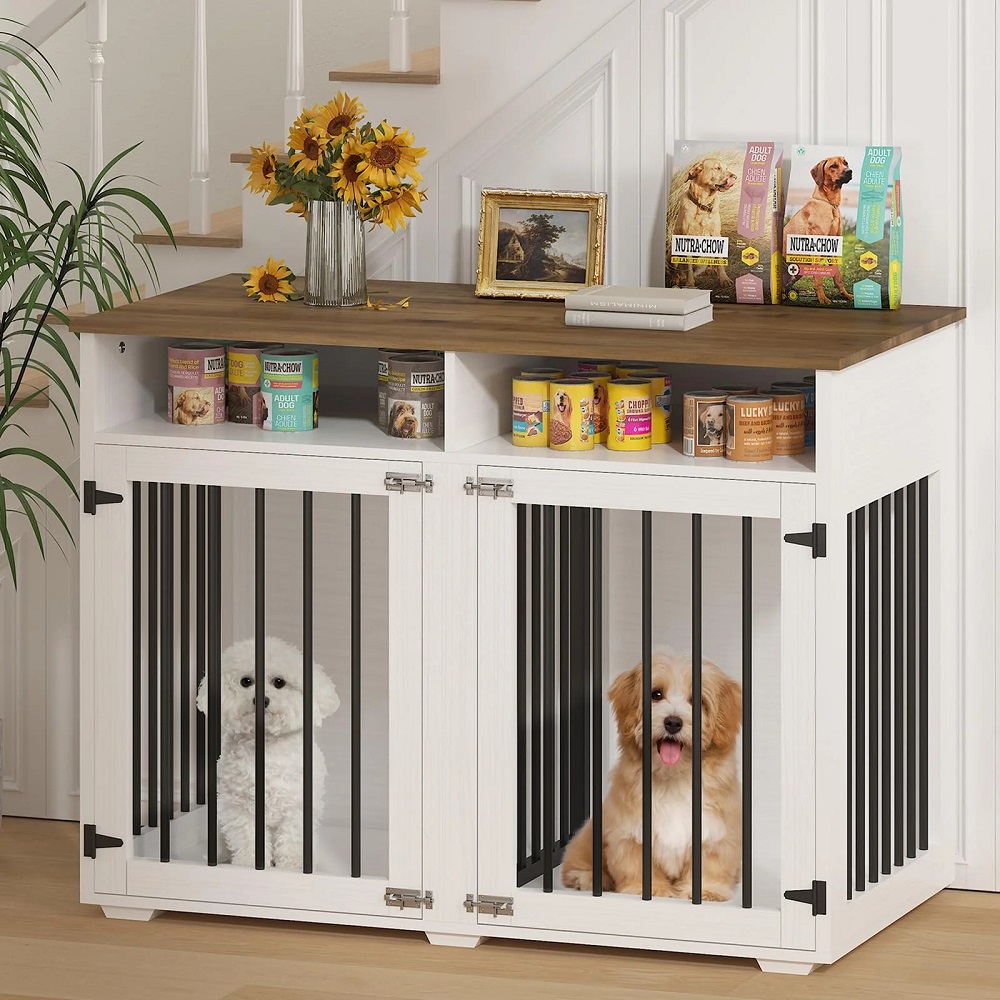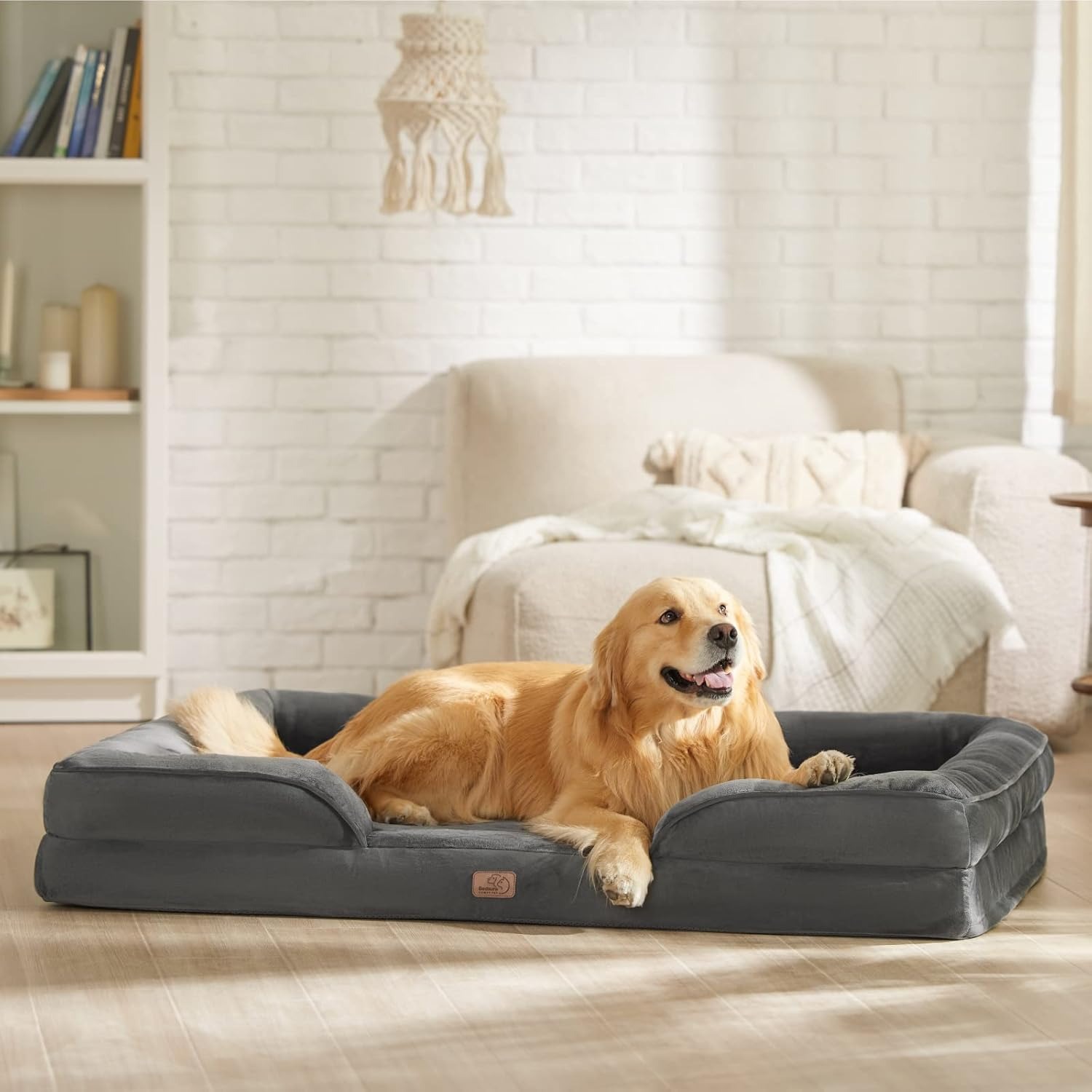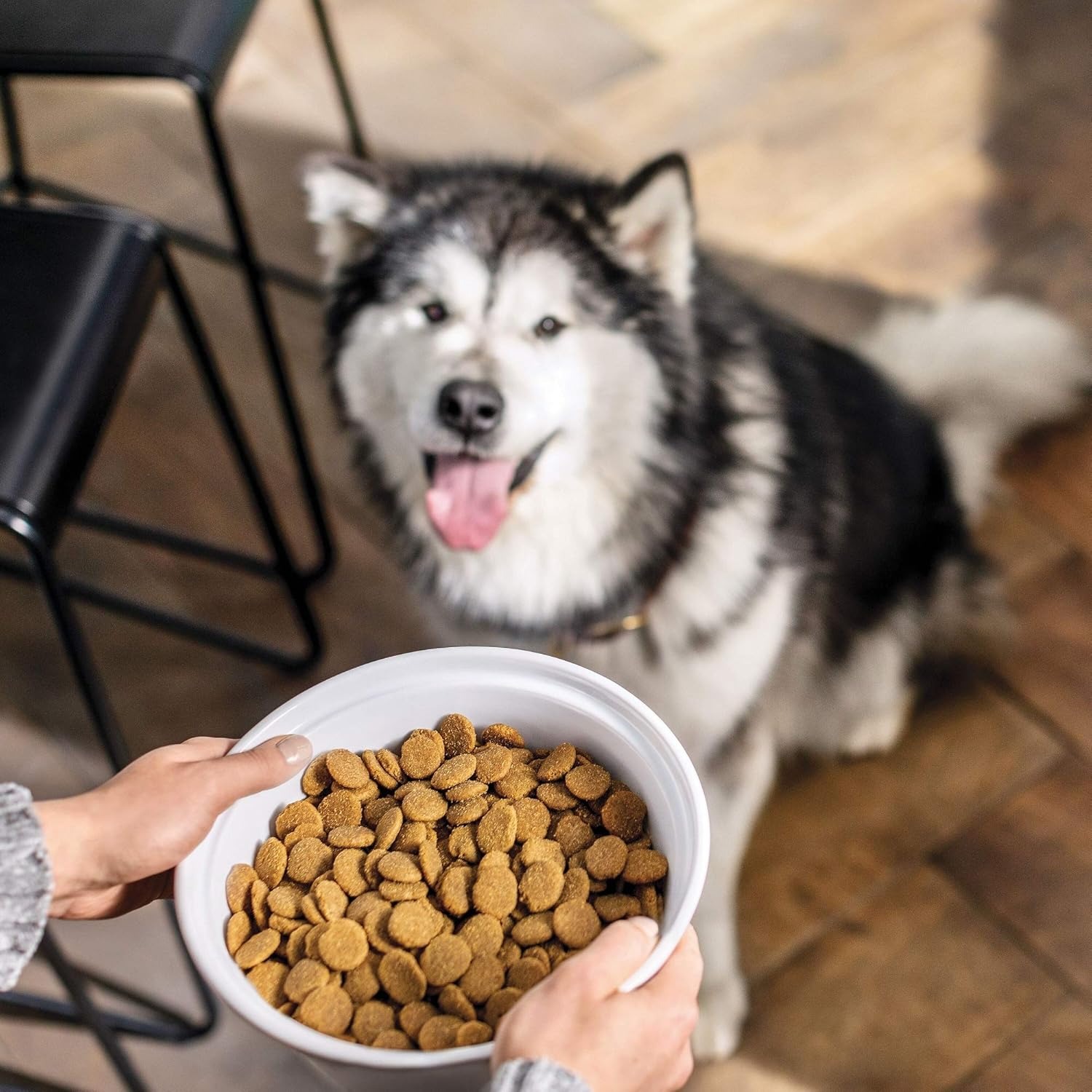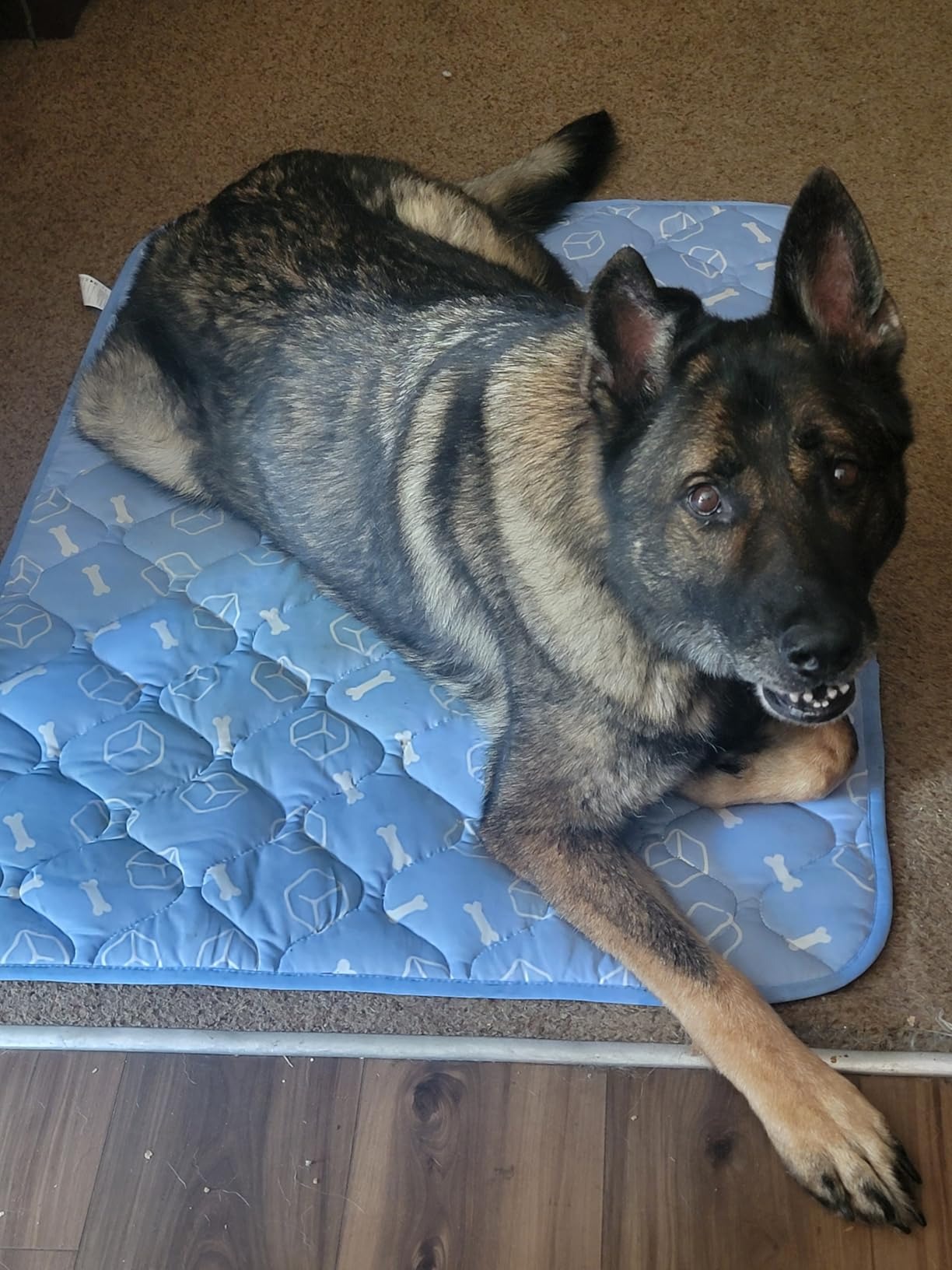Introduction to Indoor Dog Kennels
Indoor dog kennels offer a safe haven for pets at home. They provide a dedicated space for dogs to rest, play, and eat without disrupting household activities. The ideal kennel balances comfort for the dog with convenience for the owner. It should be easy to clean, durable and blend well with home decor. For pet owners living in apartments or houses with limited outdoor space, an indoor dog kennel is a necessity. It helps maintain a clean and orderly living area. With the advancement of pet care technologies, the humble dog kennel is evolving. The year 2025 sees modern kennels that combine function with innovation. These spaces reflect an understanding of canine needs and the lifestyles of pet owners. They include features that promote wellbeing and integrate seamlessly into our smarter homes. In selecting the perfect indoor dog kennel, careful consideration of the dog’s size, behavior, and the owner’s living space is crucial. Through this blog, we will delve into the key aspects of designing such a space with an eye towards future trends.
Key Considerations for Dog Kennel Design
When designing an indoor dog kennel, there are several factors to consider to ensure the kennel is both practical and enjoyable for your pet. Here are the fundamental elements to keep in mind:
- Size: The kennel should have ample space for your dog to move around comfortably. It’s important to match the kennel size to your dog’s breed and growth expectations.
- Ventilation: Good airflow is vital for your dog’s health and comfort. Ensure the kennel design allows for adequate ventilation to prevent stuffiness and odor buildup.
- Accessibility: Your dog should be able to enter and exit the kennel easily. Consider an entrance that is easy for your dog to navigate, and if necessary, include ramps for older or smaller dogs.
- Visibility: Dogs are social creatures and enjoy seeing what’s going on around them. Including areas of visibility in the kennel design will help prevent your dog from feeling isolated.
- Safety: The kennel must be a safe environment with no sharp edges or small parts that could be chewed or swallowed.
- Cleaning: Look for design solutions that make cleaning simple. Removable flooring or trays, for example, can reduce the effort required to maintain a hygienic space.
- Location: Position the indoor dog kennel in a place where the dog can be part of family activities but also retreat for some quiet time.
- Aesthetics: Lastly, the kennel should complement your home decor. Choose styles and colors that blend with your interior design to make the kennel a seamless part of your home.
By considering these key points, you can ensure that your indoor dog kennel serves as a comfortable, safe, and stress-free zone for your beloved pet while also being a convenient feature for you as a pet owner.
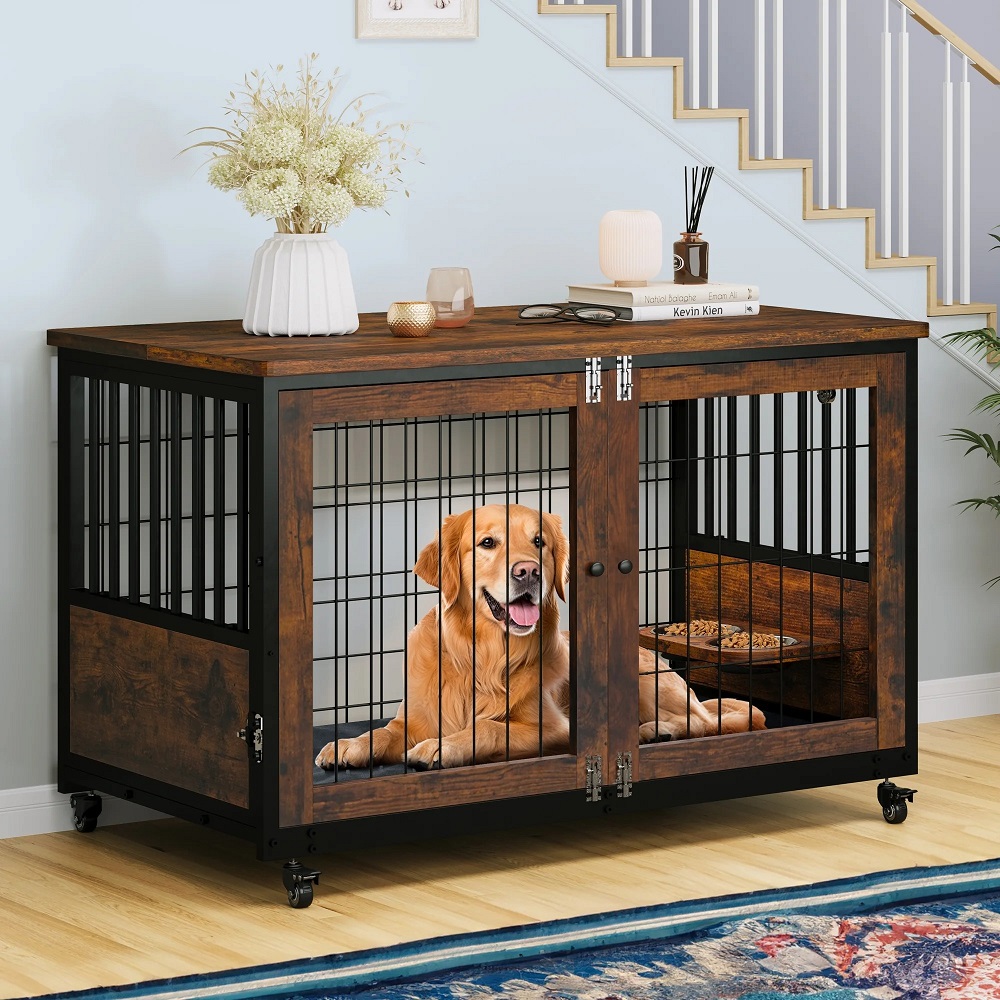
The Evolution of Dog Kennels to 2025 Trends
As we approach 2025, indoor dog kennels are not just cages, but evolving habitats. These spaces are becoming more sophisticated, reflecting the growing trends in pet care and home design. Let’s explore how these trends are shaping the future of indoor dog kennels.
- Technology Integration: Dog kennels now incorporate smart technology. This includes automatic feeders, water dispensers, and climate control systems. Tech-savvy pet owners can even monitor their dogs remotely via cameras.
- Eco-friendly Materials: The shift towards sustainable living has led to the use of eco-friendly materials in kennel design. Recycled plastics and sustainably sourced woods are in demand.
- Customizable Spaces: Personalization is key. Owners can now customize kennels with detachable partitions, adjustable roofs, and modular components.
- Multipurpose Functions: Modern kennels blend into home decor and serve multiple purposes. Some double as furniture, like side tables or benches.
- Health-Enhancing Features: Innovations focusing on canine health are in. Features such as antimicrobial surfaces and therapeutic bedding help keep dogs healthy.
- Aesthetic Appeal: The trend towards stylish living doesn’t stop at pet care. Kennels now come in chic designs and colors that enhance the overall look of a home.
These emerging trends embody a future where indoor dog kennels are more than just a space for your dog. They are a testament to the deeper bond between dogs and their owners, where comfort, functionality, and aesthetics meet to create the perfect living space for pets. With these trends, dog kennels of 2025 promise to be an integral part of modern living, tailored to fit the lifestyles of both dogs and humans alike.
Essential Features of a Modern Indoor Dog Kennel
When creating the ideal indoor dog kennel for 2025, we must include several essential features.
- Comfortable Bedding: Dogs need a cozy spot to rest. High-quality, washable bedding is a must.
- Adequate Space: The kennel should offer enough room for your dog to stand, turn around, and lie down comfortably.
- Water and Food Stations: Dedicated areas for feeding and hydration keep the kennel organized.
- Entertainment: Provide toys or puzzle feeders to keep your dog stimulated and engaged.
- Ease of Maintenance: Easy-to-clean surfaces and materials that resist wear and tear will save time and effort.
- Privacy Areas: Dogs occasionally need solitude. A kennel with a private section gives them this space.
With these features, a kennel will not just be a place for your dog to stay, but a home within your home they can relish.
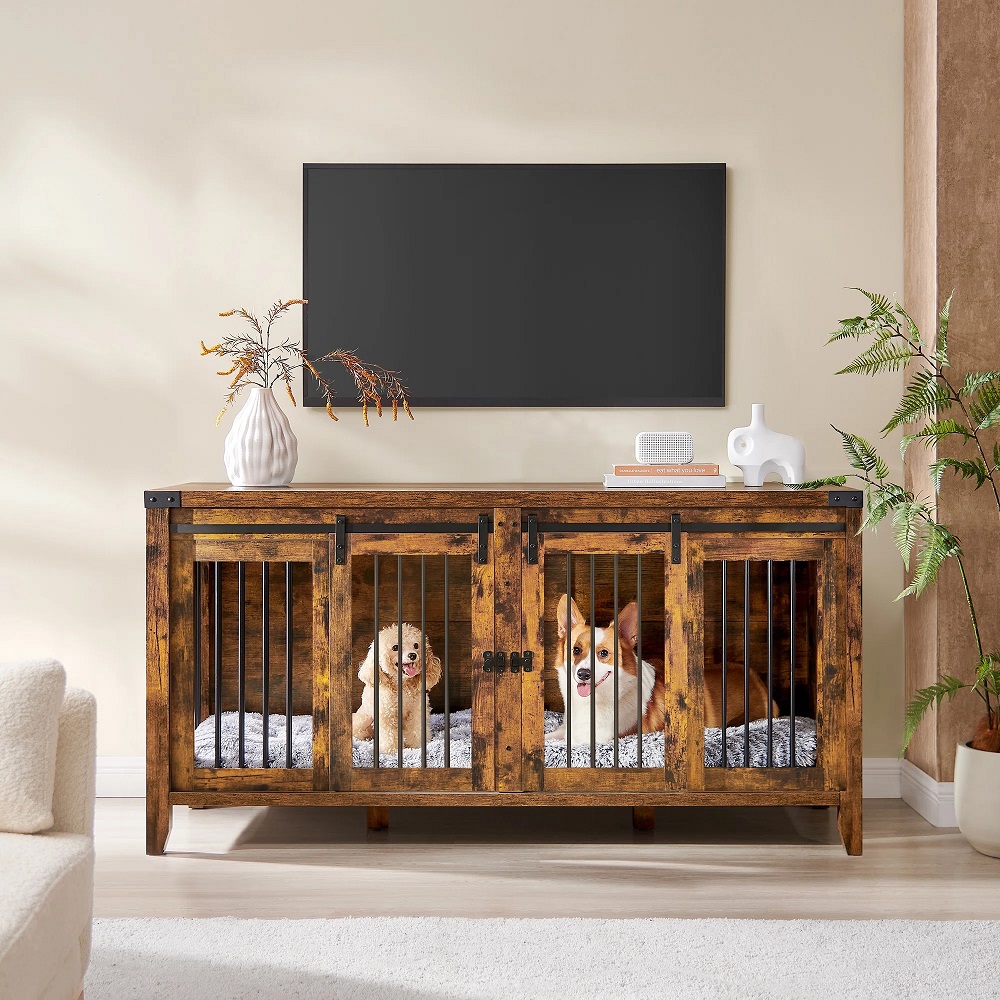
Material Selection for Durability and Comfort
When choosing materials for an indoor dog kennel, we aim for durability and comfort. It’s important these materials stand up to frequent use and cleaning. At the same time, they must be safe and cozy for our pets. Here are the aspects to consider for the best material choice:
- Ease of Cleaning: Opt for non-porous surfaces that are quick to wipe down and disinfect. Materials like high-density plastics or sealed wood are ideal.
- Chew Resistance: Dogs love to chew. Select materials that can resist chewing, such as heavy-duty plastics or metal bars with safe coatings.
- Comfort: Ensure the floor and walls are not too hard. Think about adding padded areas or soft tiles that provide cushioning.
- Non-toxicity: The kennel should have no harmful substances. Use materials that don’t release volatile organic compounds (VOCs).
- Insulation: Good insulation is key for temperature control. Look for materials that help keep the kennel warm in winter and cool in summer.
- Aesthetics: The kennel should look good in your home. Choose materials that match or complement your existing decor.
- Sustainability: If possible, pick eco-friendly options. Materials like recycled plastics or renewable woods are environmentally responsible choices.
By picking the right materials, we can build a kennel that lasts long and provides a safe, inviting space for our dogs.
Innovative Additions to Enrich Your Dog’s Environment
To make an indoor dog kennel more than just a living space, include thoughtful, innovative additions. These new features should contribute not only to your dog’s comfort but also to their mental stimulation and overall wellbeing. Here’s what you can incorporate into your design to enrich your dog’s indoor environment:
- Interactive Toys: Install built-in toys that challenge your dog’s problem-solving skills.
- Nature Elements: Use nature-inspired materials or add a small indoor plant section for a more natural feel.
- Sensory Stimulation: Integrate different textures and materials in the kennel to engage your dog’s senses.
- Viewing Windows: Consider adding a window within the kennel for outdoor viewing, keeping your dog entertained.
- Exercise Area: If space allows, include a designated area for physical activity, like a small treadmill.
- Sound Systems: A built-in sound system can play calming music or mimic nature sounds for relaxation.
Each of these additions aims to make your dog’s kennel a dynamic and joyous place. They go beyond basic needs to create an environment that nurtures your pet’s inquisitive and playful nature, ensuring they are happy even when you are away.
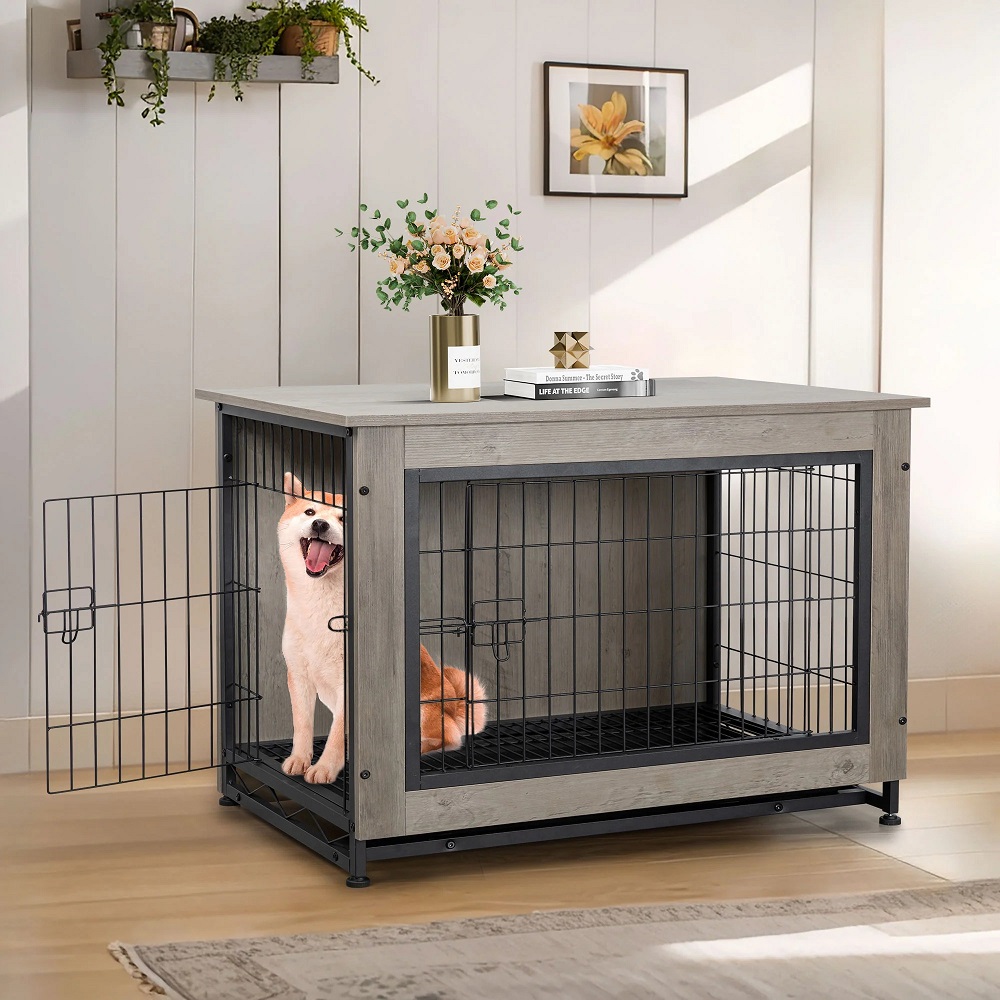
Space-Saving Solutions for Small Homes
For those with smaller living spaces, incorporating an indoor dog kennel that doesn’t cramp your style can be a challenge. However, space-saving solutions can be both stylish and functional. Here are some smart ideas to include an indoor dog kennel in your small home:
- Multipurpose Furniture: Choose kennels that double as furniture pieces, like a coffee table or a TV stand, to maximize space.
- Corner Units: A triangular kennel placed in an unused corner makes smart use of awkward spaces.
- Foldable Designs: Opt for a kennel that can be easily folded and tucked away when not in use.
- Elevated Kennels: Utilizing vertical space, elevated kennels with underneath storage can keep dog supplies out of the way.
- Built-in Niches: Customize a cabinet or shelving unit with a cozy niche for your dog, integrating the kennel with your home layout.
- Slidable Kennels: Kennels on wheels or with a sliding mechanism can be moved and stored efficiently.
- Convertible Features: Look for modular kennels that can be resized or reconfigured as needed, depending on your available space.
By considering these space-saving solutions, even pet owners in the smallest of spaces can provide their dogs with a comfortable and secure indoor haven without sacrificing precious square footage.
Integrating Smart Technology into Dog Kennels
As we step into 2025, integrating smart technology into indoor dog kennels is imperative. Here’s how technology meets pet care in today’s homes:
- Remote Monitoring: Cameras and mobile apps allow owners to watch and interact with their dogs from anywhere.
- Automated Feeders: These smart devices can schedule meals and manage portions, even when you’re away.
- Climate Control: Temperature can be adjusted automatically to ensure your dog’s comfort in varying weather conditions.
- Health Tracking: Sensors monitor your dog’s activity levels and provide health insights, alerting you to any unusual behavior.
- Entertainment Systems: Audio systems or dog-friendly content on digital displays keep your dog entertained and calm.
- Smart Doors: Doggy doors that open only for your pet via microchip or wearable tech, enhancing security and freedom of movement.
- Cleaning Robots: Automated cleaning systems within the kennel can help maintain hygiene and save time.
By embracing these technological advancements, an indoor dog kennel becomes a secure, fun, and comfortable habitat. Owners get peace of mind, while dogs enjoy a stimulating and cozy environment, even in the absence of their humans. Smart technology in dog kennels is not a luxury, but a step towards enhanced living for our canine friends.
